-
Posts
7,887 -
Joined
-
Last visited
Content Type
Profiles
Forums
Articles
Posts posted by kye
-
-
@leslie nice to see progress - we all make mistakes - the smarter we are the more bone-headed the mistakes seem! I've also played the "modify it, clean it, test it, repeat" game and there are definitely less frustrating ways to spend time that's for sure!
You've already modified the middle ring, so if gluing it is an option then it might be a good one? I'm not exactly following the details on how it all fits together, so maybe it's not a good idea. But if you wanted to test it, maybe try hot-glue? It's messy to work with, but cleans up very easily, should hold nicely if you get enough of it on there, and if you ever want to take it off then just heat up the part until the glue melts. Assuming you can screw the adapter in, even just a few dabs of it from the outside (like tack-welds) might help?
-
2 hours ago, thebrothersthre3 said:
There seems to be a lot of opinions on the downsampling 8 bit 4k to get 10 bit 444. The program you use to downsample and how you do it matter a lot. If not done right the extra information will just be tossed out the window. One of the benefits of shooting at a higher bit depth is better color accuracy and more shades of color. You won't get that downsampling 8 bit 4k as the color is already baked in. You also won't see the higher dynamic range benefits using a camera that shoots at a higher bit depth usually brings.
http://www.dvinfo.net/forum/hd-uhd-2k-digital-cinema/534402-converting-4k-8-bit-420-hd-10-bit-444-a.html
https://forum.blackmagicdesign.com/viewtopic.php?f=21&t=79003
That said all I've found is talk on it. Would be interesting if someone actually compared it to see if it makes a difference in grading. I only found mention of one bloke who tried it and said it didn't grade anywhere near as well as 444 recorded internally does. That said he could have been downsampling improperly.This is a tricky subject, but you have nailed it with your comment "seems to be a lot of opinions". Just like everything else out there, if something is engineering or science, there will be a lot of opinions, and almost be definition they will all be WRONG. People who have OPINIONS about engineering or science are people that don't understand FACTS. I'm all for having opinions, we can talk about who likes what colour science, lighting design preferences, lens aesthetics or if someone is a good actor, but anyone who has an opinion about how many pixels are in the UHD specification is just stupid. This is the same thing.
There is a huge level of knowledge about how to get accuracy beyond a certain bit-depth when talking about audio, as properly recorded and processed 16-bit audio can have better signal-to-noise ratios than is mathematically possible because of a technique called dithering which works by adding a very specific type of noise to the signal.
https://en.wikipedia.org/wiki/Dither
Fortunately, ISO noise on high-quality 4K cameras is a relatively good version of that noise, so we can get a lot of the benefits.
Downscaling from 4K to 1080 also involves oversampling which when combined with dither can extract the extra bit depth and eliminate the noise that was added.
https://en.wikipedia.org/wiki/Oversampling
There is an audio format called SACD which uses a type of digital signal called DSD, which is a 1-bit (yes, the bit depth is one bit!) at 2.8224 MHz, and because of its clever use of noise and processing, can have signal-to-noise rations of up to 120dB, which would require a 20-bit signal from a traditional codec, but because it is oversampling (in a big way) this effect can be achieved. Getting 20-bit from 1-bit is only possible because DSD has about 64x the sampling rate compared to 44kHz audio.
https://en.wikipedia.org/wiki/Super_Audio_CD
If DSD gets 19 extra bits from a 64x oversampling, then it shouldn't be impossible to do a similar thing with video and get an extra bits from resolution oversampling.
However, and this is a key part of the picture, you will only get perfect 10-bit 4:4:4 1080p from 8-bit 4K footage if that 4K footage is RAW and the noise is perfect. Any variation in de-bayering, compression or any other processing that is applied in between that data coming off the sensor and the downscale will have a damaging effect on the final result, and this is where reality differs from theory, and it the overall quality will be different depending on the camera, codec, bitrate, subject matter, and probably other things.
If none of that made sense, then here's a TLDR approximation - adding noise to 8-bit helps with banding similarly to why adding noise to your footage helps with YT colour banding. The mechanism is very different, but the effect is broadly similar.
Anyway, let's put this to bed and go back to talking about cameras ???
- IronFilm and thebrothersthre3
-
 1
1
-
 1
1
-
On 2/23/2019 at 4:20 AM, Alt Shoo said:
I was contracted to do a small Look Book for a popular “Influencer” son’s YouTube channel. It was filmed with a JVC-GYLS300 and a 7 Artisans 25mm lens. It was very difficult pulling focus with this rambunctious child moving about lol, but I got some decent shots.
Nice video!
I make home videos for my family and that's a great one - I'm sure they were really happy. One of the reasons I like doing projects like these is that that footage will have a life of maybe 100 years or more, and it will become more valuable to the clients over time instead of less valuable like a 2-year-old TV show or movie or doc that no-one remembers.
14 hours ago, BTM_Pix said:The default setting for MFT lenses is 85% of the sensor so it zooms in by 15% to match the coverage.
However, you can override that because with a number of lenses you can actually get to 95-97% so your FOV with a wide angle lens is actually a bit wider than it would be on an MFT camera.
The flip side is that you could also set it to say 75% if you have an MFT lens that has less than stellar performance at the edges.
I'd also imagine that if you're adapting FF lenses they'd easily cover the whole sensor.. even with a 0.7X adapter?
8 hours ago, billdoubleu said:I don't know why, but I have a strange fascination with seeing small lenses on large bodies and large lenses on small bodies. Looks cool!
Here's a pic to get you fired up.. SLR Magic 8mm on GH5:
and if that tickles you then you'll absolutely love this one.. Lomo 40mm on GH5 via an adapter and mounted in a hole cut in the body cap (it was a fixed lens with proprietary mounting thread so no adapters available):
-
8 hours ago, stefanocps said:
too sharp, a times seems so electronic image
The GH5 has a mode called Open Gate where it shoots with the whole sensor - 5K 4:3 video. This mode has less sharpening than the 4K modes with the sharpening turned all the way down. Also, you can soften things up in post quite easily too. Your vintage lenses will also do that in-camera if you're using them for those shots.
I don't know what editing software you are using, but if you have the time and energy to do it, Resolve has a free version that you can use to basically make the footage look however you want it to look. There are also LUTs that make the GH5 look like an ARRI Alexa, including the sharpness, so the image coming out of it is very flexible if you want it to be.
7 hours ago, stefanocps said:Just found this
What you think?
https://***URL removed***/forums/post/53141471
This could simplify some thing
4K can be downsampled to create extra bit depth and colour information, however it depends on how the codec performs and how much noise there is in the signal (less is worse).
The explanation is very technical, but basically it works because for every 1080 10-bit pixel you get after the conversion, you've averaged 4x 8-bit pixels, and so the average can be between the 8-bit limitation, and those 4 pixels contain all three colours before debayering. In practice it will be somewhere between 10-bit 4:4:4 and 8-bit 4:2:0 depending on exactly how that camera operates, but the benefit is real.
7 hours ago, mercer said:Here’s my 2 cents... the X-T3 is great. I think it’s the best camera released last year. The GH5 is also great and offers some production elements that are unheard of for a camera in that price range.
But to keep in mind, to use both of them at their highest level, it will require a pretty good computer to edit the footage unless you’re okay transcoding to a different codec before you bring the footage into your NLE or using proxies. I’m unsure how proxies work with h.265 footage since it’s such a compressed codec that it still may require a fair amount of processing power to go through them.
I’m surprised nobody has mentioned the P4K. Even the 4K ProRes LT looks great with that camera but it will require some patience to get your hands on one and a little bit to rig up.
Good luck with your choice.
If the OP is willing to wait for the computer to render proxies and take longer to render out the final project then basically any computer can edit any resolution. We forget that people used to make broadcast TV in SD, which is 27x less pixels than 4K. Resolution pretty much doesn't matter when you're editing (it matters when you're grading or doing other things) so that means you can render proxies and edit them nicely on a computer that is less than 4% of the performance required for 4K editing.
I render proxies at 720p and edit them on my laptop on the train. My computer is perfectly capable of playing 4K files but I don't need the extra resolution and saving space on the internal SSD that I'm editing from are advantages too.
-
6 hours ago, newfoundmass said:
The GH5 is a great option. Using tap to focus works really well unless you're in terrible conditions. The auto focus performance really depends on which settings you use. I find it quite usable in one area and pinpoint AF. Also coming from the GH3 you'll have the focus assist features with the GH5 that make manual focus very easy.
You can rent one for fairly cheap these days, maybe try it out? You might be surprised!
Absolutely. I'd also suggest trying before you buy.
One of the things that I thought the GH5 would be absolutely great at would be focus peaking, but it didn't stack up to what I had in my head. To be fair I'm not sure if anything does, but there are situations I found it wasn't that great (ie, terrible) but there are ways around it with punching in to focus, and it wouldn't have changed my decision to buy it, but it was still a disappointment. Sadly, as good as the GH5 is (and I absolutely love mine) no camera is perfect and every feature has its limits on every camera.
-
@kaylee You should also have asked if anyone has heard of it because of the latest news. I hadn't heard of that either, in fact, the only reason I am aware of it now is because you asked about it...
Maybe it's a big news story and maybe not, I don't know, but what happens in the US is far less important when you don't live there

-
-
5 hours ago, thebrothersthre3 said:
Flaring is another thing you might want to test. That is if you care about it.
I think your tests will yield great accurate results for the most part.
Though do you care about the nitty gritty details that much? Would taking the lens out and shooting with it better show you if you like its characteristics.Flaring is interesting, I don't really know how that works - if it's different at different apertures or focal distances. The frame is getting kind of crowded at this point!
5 hours ago, no_connection said:What would be interesting to know is how the aberrations look, be it red/cyan magenta/green and so on, how it fringe around a bright light, flare, focus breathing.
And how almost in focus areas look, I don't care if the eyes are super sharp when the nose looks awful, or the transition of sharp hairs to out of focus feels wrong.
That is a 135mm f3.5 Takumar right? Focus ring it sooooo smooooooth!
The one thing that this test won't be so good for is the imperfections because most of these lenses are FF and I'm using a MFT sensor, so the lens could have dancing bears in the corners and I'd never know it. This is where CA and the other issues tend to exist, so unfortunately this is a "lens on MFT" test. Having said that, I do want some things in focus near the edges / corners so we can at least see how bad things are on MFT.
There should be lots of things in the slightly out-of-focus areas so I think that's covered.
Smooth like butter!! It really is incredible, and my one is virtually brand new. The other Takumar lenses are all just as good, if a little firmer. It's a pity they don't look as good or have the focus ring going in the right direction ???
-
1 hour ago, stefanocps said:
this could be a good solution. I already have a selection of old Minolta Rokkor lenses which i used on GH3. Can't rely only on manual focus though, as often i need to be able to rely on autofocus, being me the only operator working at documentary, interview etc... I don tknow how the AF of gh5 has improved, for what i have read seemes nearly unusable. You never thaught of XT3?
I don't use AF on the GH5 so can't comment. Camera reviewers make a big deal of these things, but what they don't tell you is that they're often using it for recording the camera reviews they make. I would imagine it's quite a personal thing, depending on the circumstances that you put the camera into. I think it's kind of gotten blown out of proportion really, it seems like the GH5 can't ever focus and the other cameras never miss focus, but that's just not true. Even if it was 90% vs 95%, that's still 90%.
I don't think the XT-3 was out when I bought my GH5, maybe I'm wrong. I guess in the same way that people think of the AF on the GH5 as "risking it", I thought of other cameras IBIS as "risking it" when the GH5 was the IBIS king for a long time. I shoot almost exclusively hand-held so the IBIS is a huge deal for me. I'm not 100% sure that it is still the IBIS king now, but the combination ofnnearly the best IBIS, 10-bit internal, huge range of lenses available, rock solid industry standard performer was really the balance of things for me.
People say the XT-3 is great, and they're probably right

-
1 hour ago, mercer said:
Haha, I know what you were referring to.
Let me try again because I think our signals are crossed. People moving in the background is not a function of how the out of focus areas are rendered but each individual lens will render out of focus areas differently, so people moving in the background may look worse with some lenses than others.
Ok, that makes sense now, I think. But you've convinced me to shoot some video

Maybe I can put up the stills and see which ones people want to see video for. That way I'm not carting around a whole suitcase full of lenses!
-
I struggled for ages with criteria that sound like they might be similar to yours. In the end it came down to the Sony A7III, which has good AF and fast but expensive FF lenses, or the GH5 and 10-bit files with the reliability, lack of overheating issues etc, and pro features it offers but limited AF.
I ended up deciding that going to manual focus worked for me and my style of film-making, and because the IBIS is so great you can adapt old lenses and still get great hand-held footage, so I now have the GH5 and a cheap ebay vintage lens collection that is so large that I hide it from my wife.
-
Just now, mercer said:
Haha. I don’t think motion cadence is mythical but that’s an argument I don’t care to engage in. Lol.
But, I wasn’t referring to motion cadence, I was referring to motion blur and how the out of focus areas may be impacted by people passing by, birds flying by, panning, etc...
LOL, I was trying to imply motion cadence doesn't exist, more that no-one seems to know where it is

With people moving in the background etc, is that a function of how the out of focus areas are rendered? Like, bokeh balls with hard edges look great for city lights but are really distracting for everything else? Or is it something different?
-
The $7 Petri 135mm f3.5 was the first to have cleaning attempted, and holy wow did it need it. It was absolutely filthy.
There's a lot of discussion online about how Petri lenses are high quality Japanese lenses, but are "uncleanable" because the manufacturer glued the screws in, and even things like soaking them in acetone for days doesn't loosen them. Someone broke a screwdriver trying to get one apart.
Luckily I had no problems with the screws on this one..
Unfortunately, I had two kind of trouble, the first was that I couldn't get the front element out. I tried the old elastic bands and a lens rear cap, I tried PVC pipe and blu-tak (bad idea, it just gets pushed into the grooves), lens caps and tape, nothing would make it move. This is a pity because there is fungus between the front and next element.
I was able to clean the back of the second element, which was filthy - it looked like someone had wiped the kitchen and bathroom benches and then tried to wipe this out. Soapy water and rinse cycle of distilled water got it nice and clean.
Then the last element came out ok, but unfortunately it was actually two elements glued together as one lens, and naturally the filth was in-between them, so game over at my current skill level. You can see it a bit in the pic above. However, I was able to clean both sides of that, which was also needed.
Now it's back together again and still works! Bonus!!
Did I mention it was dirty?
-
-
11 minutes ago, mercer said:
Well, in some ways, this is subjective to which camera you have... right... in the end you are going to be shooting video with a GH5.
But also remember that not all Raw is created equal. There is this misconception that all Raw is the same but you have to take into consideration the bit depth (only 12bit Raw with the GH5) the filter stack, and the sensor size.
So although you may learn more about your lenses shooting Raw stills, your end goal is video, so I would think a video test is important?
Also you probably should find someone to shoot to see movement and skin tones.
I always liked how Nick Driftwood and Philip Bloom do their tests. They take a long ass lens into the public and get some footage. Obviously, this isn’t the same thing you’re after and in most cases they are testing cameras and not just lenses.
So maybe if you do an elimination of your lenses, you can do a final round of tests with video at one of your favorite places to shoot the video tests?
Damn, I was hoping you wouldn't have any good points, but...
I'm not sure that movement is impacted by lenses, they all let light through in a constant stream at, well, the speed of light, so I don't think the mythical motion cadence comes from the lens. In terms of how these things translate to video though, I may have to take a few of the lenses to a nice place and film some stuff so we can see.
To me, if you can see lens X recording video and go wow, that's good at Y or not good at Z, then you can use the stills to kind of work out what the other lenses would be like. I definitely don't want to record video for every lens at every aperture setting, that's for sure!!
-
Galaxy Fold
In: Cameras
3 hours ago, kaylee said:@BTM_Pix agree 1000% – i still dont like "apps" ?
do you...? i think those are pretty close to being a reality... isnt this like, a clear precursor to our doom tho?
im full of it anyway: id fall of that hoverboard and break my face
Nah, it's the tiny spider drones and tiny insect drones that are the worrisome ones, because it doesn't matter how many locks you have on the door, they just come in through the vents and crawl on you when you're sleeping... ???
-
Actually, this halation effect also comes from vintage lenses too.
I just took this shot of a lens I paid basically nothing for on ebay and it's got the same fringing you show above:
If you zoom in around the highlights you'll find that some stems on the plant are very red.
(This lens is well regarded and made in Japan, but are available very cheaply because they are almost impossible to take apart and clean)
-
So, I discovered that the Petri 135/3.5 was marked as delivered a couple of weeks ago, and "left in safe place near front door" and I searched for it but couldn't find it. I assumed it was lost or the postman stole it or whatever. It was $7. I was more concerned with the fact I paid almost double that in shipping!
Anyway, a lady knocks on the door - she lives some way down the street and found it hidden on her front verandah.. the mighty Petri lives!!
So, after cleaning it up (it was absolutely filthy, I think they stored it in a barn, or in the glove box during their desert crossings) and moving the focus control for the first time in about 1000 years back and forth until it stopped making grinding sounds, I took a few test shots. You know how they say that "there's no such thing as a bad 135mm lens", well, I don't know if that's true, but if there is you should pay a lot less than $7 for one, because this one is lovely! A little soft wide-open, sharp as hell stopped down a bit, lovely hex shaped bokeh, and it even has a little retractable sun-hood, and came with a soft pouch (that hasn't aged well).
The mighty Petri 135/3.5 (image taken with Konica Hexanon 40/1.8):
Sample shots wide open - unedited in any way:
It's still filthy, and I think there's fungus in it too, but seriously...
Oh, and these are on the GH5 with a straight adapter, so it's a 270mm lens on the 2x MFT crop.
-
Galaxy Fold
In: Cameras
1 hour ago, kaylee said:still tho... wheres my hoverboard?
screw the hoverboard.. we've gone past the time that Blade Runner took place. I want robotic pets!!
-
Galaxy Fold
In: Cameras
4 hours ago, webrunner5 said:If it can fit in a inside suit pocket they might have a winner at that price. It can have it's usage for presentations for sure.
3 hours ago, Robert Collins said:I typically carry a phone and an ipad around with me. So I can sort of see the potential for combining the 2.
The price is definitely exotic, but having a larger screen is useful all the time. I have spent the last few years at a company that does large urban planning projects and people were consistently in meetings and talking about options of various things and so one of them takes out their phone and pulls up Google Earth and then two or three people are all crowded around a 5 or 6 inch screen. Even if you have a laptop the number of times it's easier to pull out your phone, or even when you're comparing a plan on the laptop with satellite imaging on your phone, they're hugely useful. Just don't have notifications on for texts and messages - if you're showing the big boss something and your wife sexts you then that may not go down well!!
- webrunner5 and kaylee
-
 1
1
-
 1
1
-
3 hours ago, mercer said:
Things change when you shoot video, so I would include a 3-5 second clip with every test shot.
I’d also let the focal length speak for themselves by leaving the tripod in one locked down spot.
Also try to do an interior and exterior version of your test. If you use a Variable ND, you can keep ur exposure similar by using the in camera meter.
Obvious issues are the varying speeds of the lenses. To compare a wide open Voigtlander 17.5mm versus a 50mm 1.8 Nikkor wide open, the Nikkor will win every time. So it’s probably best to group your lenses by either focal length or speed... or both and have multiple groups.
How does video look different? and wouldn't that be more subject to which camera you have? If I could shoot RAW video then that might be neutral enough perhaps, but unless someone wants to send me a P4K, then....
 1 hour ago, Shirozina said:
1 hour ago, Shirozina said:What do you hope to gain from these tests?
Broadly, I want to see how my existing lenses (the ones I intend to keep) compare with the others, from the others I want to see which lenses I should keep (if any), I want to learn how to read an image so I can evaluate images I see online better, I want to learn more about what I like and why I like it, and I want to hear what others have to say so I can learn more about how other people see things.
I also want to give back because the internet (and all you lovely folks out there) have been crazy good to me over the years and if I'm going to all this effort then why not, and even if I wasn't feeling generous having other people point out things I didn't know to look for is well worth the work involved in sharing it anyway

-
1 hour ago, IronFilm said:
This! Unfortunately the FS7 has in many ways "replaced" the F5 (and even F55 at times), when in reality the FS7 is quite the step down.
Thus there is a big hole left between the FS7mk2 and VENICE in Sony's line up.If everyone gets what they want then that hole will be filled with the A7SIII ???
-
My last lenses are due to arrive, and before I shoot 10 million test images I want to make sure the test is good.
I will be shooting lenses with a wide range of different focal lengths, maximum apertures, and minimum focal distances. I've done a test mini-shootout that looked like this:
~50mm on SB F2.8:
~40mm no SB F2.8:
~20mm no SB F2.8:
I tried to keep the same framing so had to move the camera back with the longer focal-lengths. Unfortunately, because of this the DOF is different on all lenses even though those test shots are all F2.8.
Do I make a test scene where the framing is similar in each lens so that you can compare resolution (ie, the texture or reference charts) and accept that the DOF will be different, or do I keep the DOF the same but vary the framing, meaning that you can't compare resolution etc.
I'll be testing lenses that range from 8mm F4 to 200mm F4 and with apertures as much as 0.95.
In terms of what I want to shoot in the test scene, here are my notes:
- Shooting stills as they're higher resolution than video and are RAW so it eliminates most of the colour science and processing from the camera
- Controlled lighting for consistency throughout test
- Different colour temperature lights for a bit of colour (probably tungsten key with daylight WB and other lights for colour)
- Things in focus in the middle and at the edges of the frame (to test sharpness)
- Focus target in the centre
- Measuring tape running front-to-back to look at focus transitions
- Colour checker of some kind (I'll use my DIY one, not calibrated but good for comparisons)
- Fully manual settings and identical WB between shots to show colour differences
- Some bokeh with things out of focus and probably also an LED light in the background for bokeh ball
- Test every lens at every f-stop (it will be a huge number of images, but good for comparison and in my mini-test I didn't do that and I wished I had)
- I'll also shoot every lens at an identical set of settings to determine relative brightness
Thoughts?
How should I frame and is there anything missing? (No, I don't have easy access to a model, plus I find their non-identical facial expressions taint the interpretation of images
 )
)
-
@Towd you might be right that he's shooting an in-camera profile and just being careful to WB. That would make his workflow even faster, which as @mercer points out, is exactly what you want to have from a business perspective.
In terms of getting good video from your Sony, if you can get a bit of noise into the footage before it's saved to the card then shooting 4K 8-bit and downscaling in post to 1080 may have almost the same benefits at having 10-bit. I'd suggest dialling the NR as low as possible for this reason (assuming you haven't already).
The Sony cameras aren't the best for colours, but we're really being picky here, and they should be fine to replicate the efforts of someone who looks like they don't adjust WB in post at all.
Considering this is for business purposes where simplicity is best, perhaps setup a test environment and start with the camera on the simplest settings possible. 4K with a standard colour profile perhaps. Shoot it with proper WB across each of the profiles, then look at the footage and see where the problems are and what you might need to do to fix them, perhaps tweaking each profile to work out how good it can be in-camera, and only then if they don't work would you add in complexity of shooting in LOG and having to grade at all.
If you can dial-in the right picture profile in-camera then editing 1080 and outputting 1080 with (maybe) a couple of effects or a LUT or power grade preset then that would be a much more effective workflow, and would allow you to deliver faster, book more clients, and get a pay rise

I used to read audio technician magazines for years and the main theme in the magazines was that small business owners were always lusting after exotic microphones and luxury pre-amps when their clients don't notice and they haven't had a holiday in a decade and they should just take their kids to The Grand Canyon and watch a few sunsets with their wife.




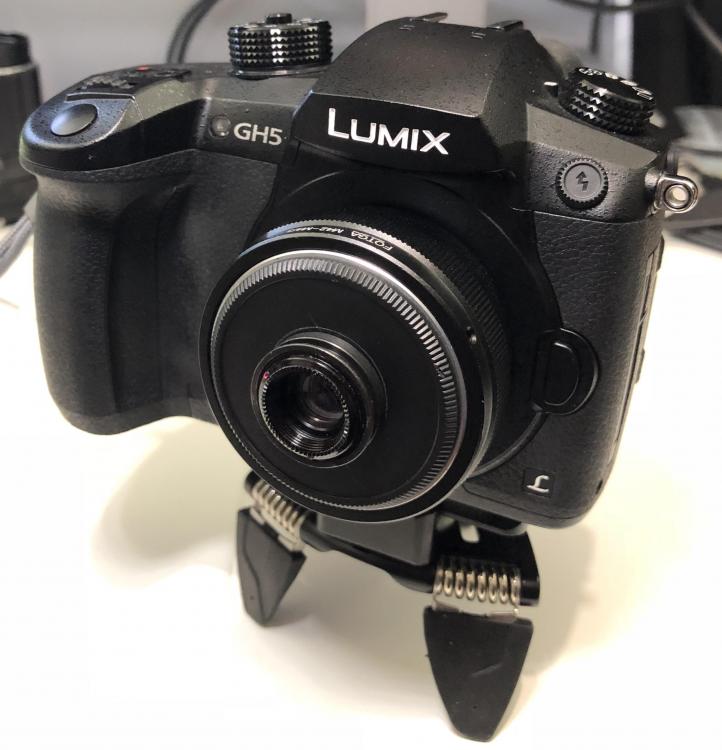
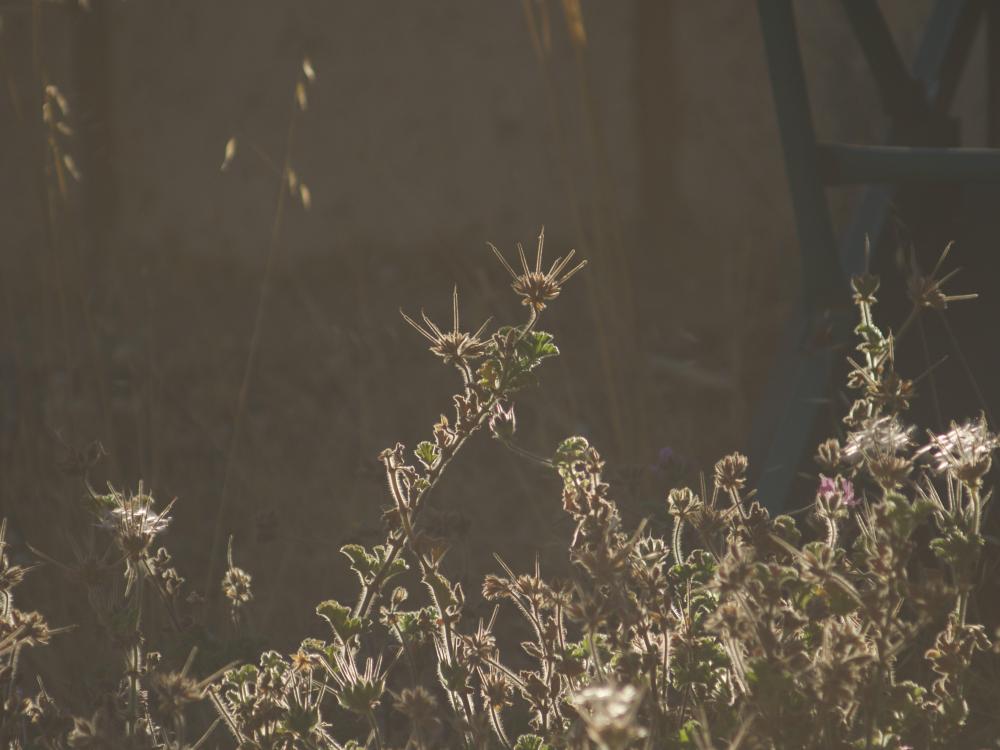
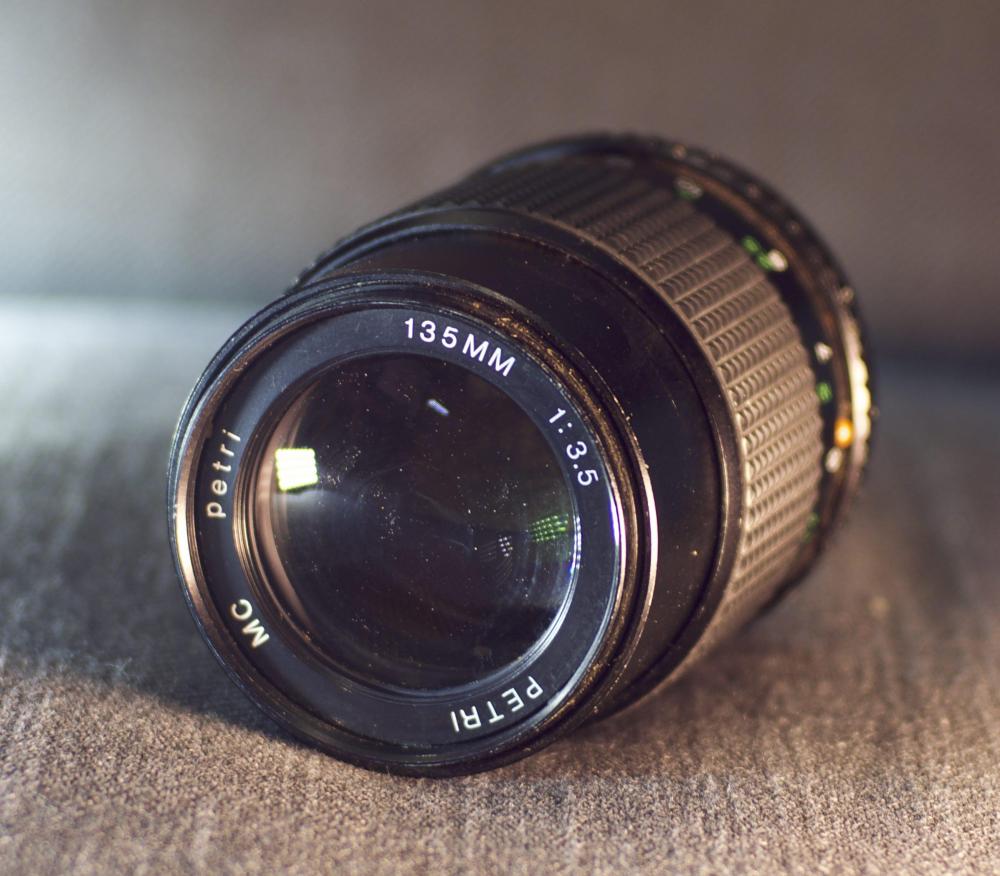

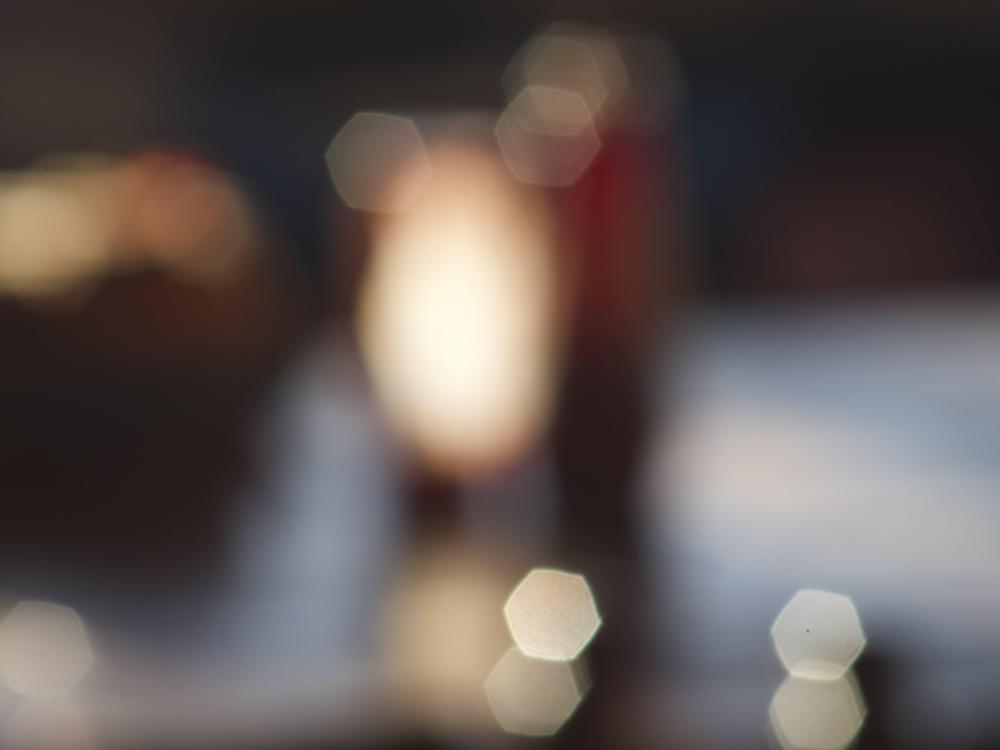
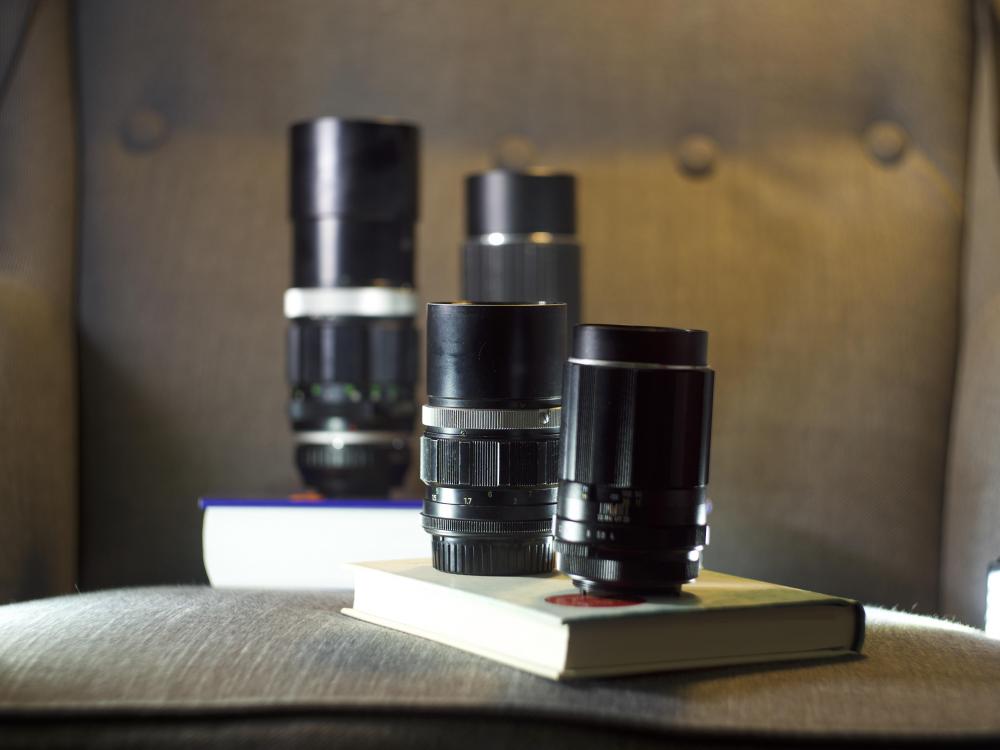
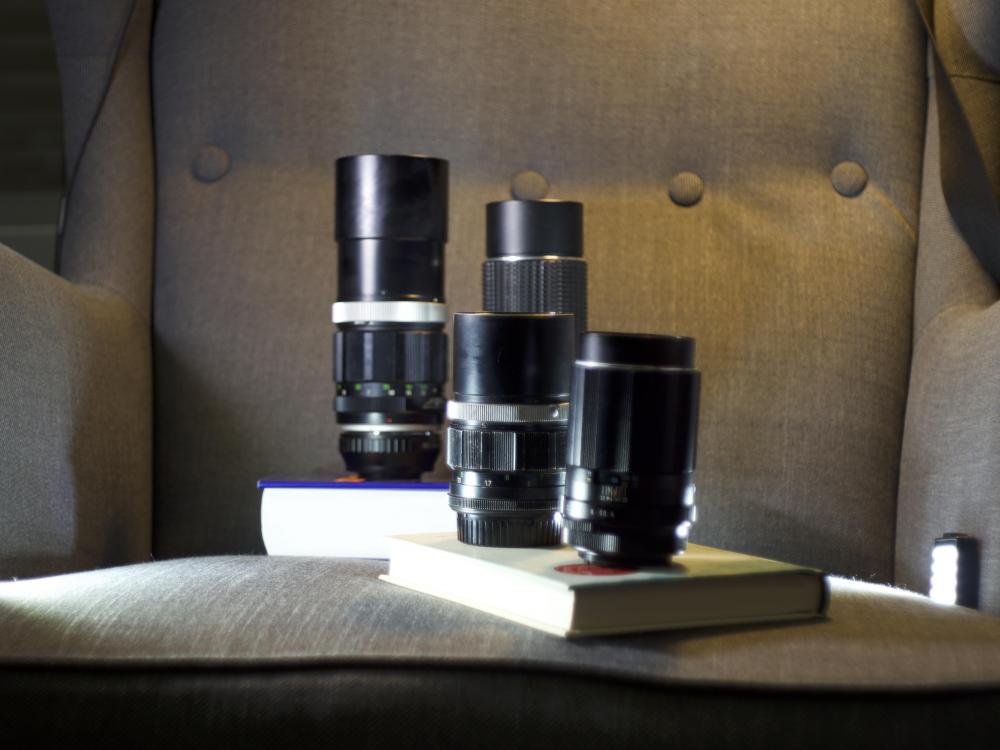
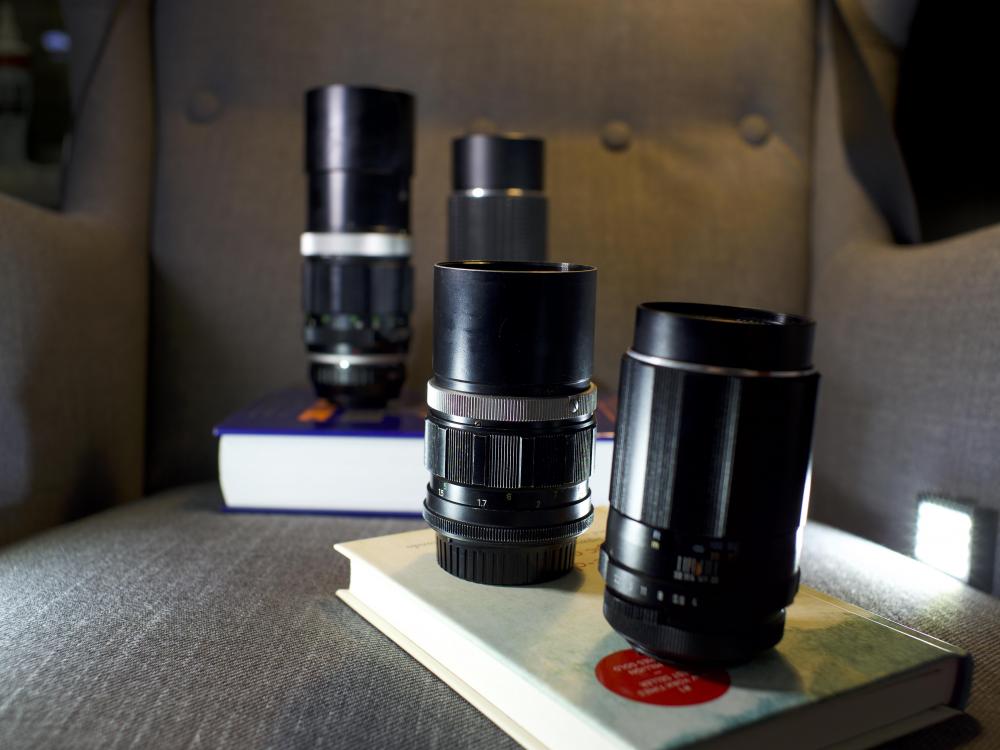
How would you make a set look kinda like this on a low budget
In: Cameras
Posted
Sewer is an obvious one, but also anything that doesn't have windows, and probably also doesn't have graffiti (as that's a give-away that people go there). Disused railway tunnels, abandoned buildings, even just a really long wall perhaps? If you film at night then it won't be obvious it doesn't have a roof. Lighting something that doesn't have a roof might be tough, especially if you want a single long follow-shot where you can't cheat by using the same few lights again and again.
If you can cheat then film it with a couple of angles (wide, mid, close) then move the back light to the front and shoot them walking the next section, with a bit of overlap, then cut it together in the edit?
Obviously be careful with safety and trespassing and all that, but IIRC you're out in the country so there might even be a long building or wall that you can film against that wouldn't even be on private property, or maybe no-one cares.
If you want it to be wet and underground then you could spray the background with water just before the actor is in frame so things are dripping and add in wet echo-ey noises in post and drop the blacks a bit to hide anything that gives the game away.